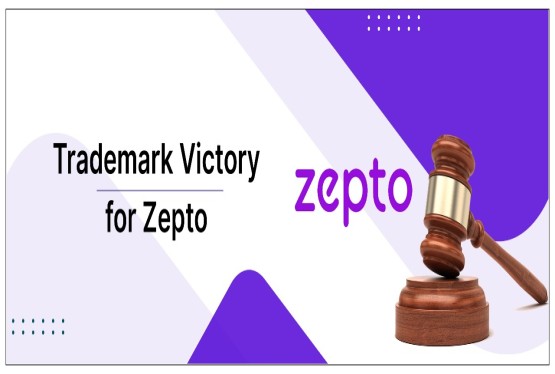India's vibrant film and television industry relies heavily on copyright protection, often strengthened by copyright registration and trademark registration, to safeguard creative works and fuel its economic engine. This article examines the crucial role of copyright in this dynamic sector, exploring the legal framework provided by the Copyright Act, 1957, and its amendments. It addresses the persistent challenges of piracy, including digital infringement, and the legal measures taken to combat them. The rise of OTT platforms, the complexities of digital rights management, and the nuances of "fair dealing" are also discussed. Finally, the article looks towards the future of copyright in the Indian film and television industry, considering emerging technologies and the need for ongoing adaptation in the digital age.
1. Legal Framework: Copyright Protection in India
The Copyright Act, 1957, along with its subsequent amendments, provides comprehensive protection for creative works, including cinematographic films and television content. The 2012 Amendment to the Act further strengthened the rights of copyright holders, particularly in the digital age. The primary legal protections granted under Indian copyright law include:
• Exclusive Rights: Section 14 of the Copyright Act grants the owner of a copyright the exclusive rights to reproduce, distribute, perform, and communicate the work to the public.
• Moral Rights: Section 57 provides creators with the right to claim authorship and prevent distortion or modification of their work.
• Duration of Copyright: As per Section 26, the copyright in cinematographic films lasts for 60 years from the year of release. Similarly, copyright in original literary, dramatic, musical, and artistic works used in television productions lasts for the lifetime of the author plus 60 years (Section 22).
In addition to the domestic framework, India is a signatory to international treaties such as the Berne Convention, TRIPS Agreement, and WIPO Copyright Treaty, ensuring that Indian copyright holders receive protection in other member states.
2. Economic Significance of Copyright in Indian Cinema and Television
a) Incentivizing Creativity and Investment
India’s film industry, popularly known as Bollywood, along with regional cinemas such as Tollywood, Kollywood, and Sandalwood, relies on copyright protection to safeguard investments in filmmaking. The Indian Motion Picture Producers' Association (IMPPA) and the Film Federation of India (FFI) actively work towards protecting the rights of filmmakers and producers.
Similarly, the Indian television industry, with over 900 channels and growing demand for OTT platforms like Netflix, Amazon Prime, and Disney+ Hotstar, benefits from strong copyright enforcement. Without such protection, content creators would struggle to monetize their works through licensing, syndication, and distribution deals.
3. Licensing and Distribution in the Film & Television Industry
Copyright law facilitates the commercial exploitation of films and TV programs through various licensing agreements:
• Theatrical Distribution: Producers license films to distributors, who in turn sell exhibition rights to cinema halls.
• Broadcasting Rights: Television networks acquire rights to air films and serials, often through satellite and digital licensing deals.
• OTT and Streaming Services: Platforms like Netflix, Hotstar, and Amazon Prime acquire exclusive streaming rights to Indian movies and shows, generating significant revenue through subscriptions and advertising.
4. Challenges: Piracy and Copyright Infringement in India
Despite strong legal protections, piracy remains a major issue in the Indian film and television industry. Websites such as Tamilrockers and Telegram channels often provide pirated versions of movies and shows, causing substantial revenue losses.
a) Legal Measures Against Piracy
To combat piracy, the Cinematograph (Amendment) Act, 2019 introduced criminal penalties for unauthorized recording and distribution of films. Key provisions include:
• Section 7(1A): Punishment for unauthorized recording or transmission of a film with imprisonment of up to three years and a fine of up to Rs. 10 lakh.
• Blocking Orders: The Information Technology (IT) Act, 2000, allows the government to block websites engaged in copyright infringement.
In Super Cassettes Industries Ltd. v. Myspace Inc. (2011), the Delhi High Court held that digital platforms must take proactive steps to prevent copyright infringement, setting a precedent for online streaming services.
5. Fair Use and Transformative Works in Indian Copyright Law
a) Fair Dealing Provisions Under the Copyright Act
Unlike the "Fair Use" doctrine in U.S. law, Indian copyright law follows the "Fair Dealing" principle under Section 52 of the Copyright Act. Fair dealing allows limited use of copyrighted works for:
• Research, criticism, and review
• Reporting of current events
• Educational purposes
• Parody and satire
However, courts carefully interpret these provisions to prevent misuse. In Academy of General Education, Manipal v. Malini Mallya (2009), the Supreme Court ruled that fair dealing must not substantially harm the commercial value of the original work.
6. Copyright in the Digital Age: OTT Platforms and Streaming Rights
The rise of digital streaming platforms has transformed copyright dynamics in India. Original web series, short films, and exclusive releases on OTT platforms are protected under copyright law. Section 2(d) of the Act ensures that streaming content is covered under cinematographic film protection.
OTT platforms face challenges related to content leaks and digital piracy. For example, in Star India Pvt. Ltd. v. Haneeth Ujwal (2019), the Delhi High Court directed internet service providers to block access to rogue websites distributing pirated versions of IPL matches.
a) Digital Rights Management (DRM) and Technological Protection
To counter piracy, digital platforms use DRM technologies, which encrypt content to prevent unauthorized copying or sharing. The IT Act, 2000, supplements copyright laws by penalizing hacking and unauthorized digital access under Section 66B and 66C.
7. Future of Copyright in the Indian Film & Television Industry
As India’s film and television industry continues to expand, copyright law will play a critical role in:
1. Strengthening Anti-Piracy Measures: Enhanced cooperation between enforcement agencies and digital platforms will be essential.
2. Regulating AI-Generated Content: With AI-created scripts and deepfake technology, copyright law may need amendments to address new forms of digital infringement.
3. Harmonizing Copyright Laws with Global Standards: India may consider ratifying the WIPO Beijing Treaty on Audiovisual Performances to enhance protection for performers’ rights.
Conclusion
Copyright protection is the backbone of the Indian film and television industry, ensuring that creators, producers, and distributors can monetize and safeguard their works. The Copyright Act, 1957, along with amendments and judicial precedents, provides a robust framework for protecting films, TV programs, and digital content. However, piracy and evolving digital challenges require continuous legal adaptations. Strengthening copyright enforcement and embracing technological solutions will be vital for sustaining India’s vibrant entertainment industry in the future.






























_(b)_of_the_Trademark_Act,_1999_(1)_crop10_thumb.jpg)



_crop10_thumb.jpg)




























_crop10_thumb.jpg)
_crop10_thumb.jpg)






_crop10_thumb.jpg)








_crop10_thumb.jpg)
_crop10_thumb.jpg)



_crop10_thumb.jpg)





























_crop10_thumb.jpg)

















_crop10_thumb.jpg)






_crop10_thumb.jpg)












































































































































_crop10_thumb.jpg)



































_crop10_thumb.jpg)












_crop10_thumb.jpg)






















